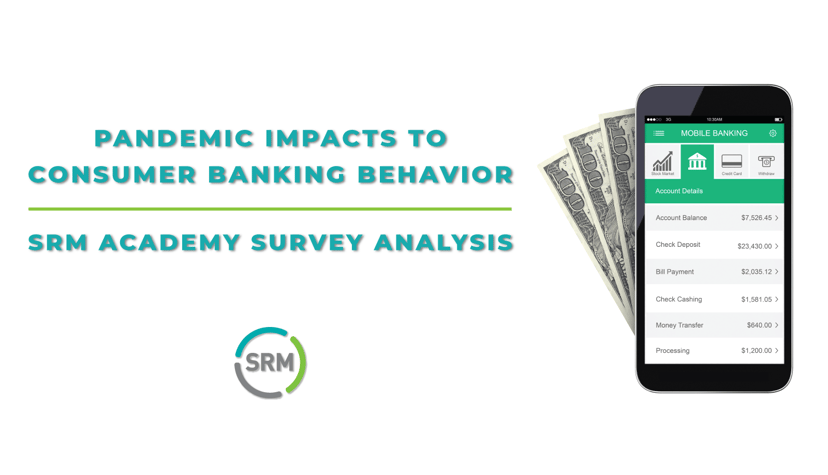
In 2020, SRM conducted three surveys to shed light on the financial services industry’s approach to navigating the pandemic. Our March and June surveys focused on bank and credit union executives’ responses to COVID-19 and their strategies for delivering uninterrupted service to customers.
Six months into the pandemic, we further rounded out the picture by commissioning leading research firm Harris Insights and Analytics to collect data directly from US consumers. This survey assessed how their banking habits had evolved since global lockdowns began, and how they might continue to change in the future. The results were further analyzed by SRM’s Europe-based Data Analytics team, which specializes in consumer behavior and loyalty insights.
The findings revealed some important differences by segment with key insights for go-forward digital banking strategies.
Health or Convenience – Which Leads the Charge?
It has been said that the pandemic gave a permanent jolt to a shift to digital banking channels that was already underway. While that’s almost certainly true, particularly in the areas of contactless and non-cash payment preferences, the SRM/Harris Insights data indicate some likely reversion to the mean regarding online banking use.
More than half of respondents cited health concerns rather than convenience as the driving factor behind their recent changes in banking behavior. It stands to reason that, as such concerns subside, their prior preferences will return to some extent, as well. Consumers across all age groups predicted scaling back their use of online banking for tasks like bill payments and balance transfers going forward.
While most financial institutions reported major shifts toward digital channels in 2020, our research paints a more nuanced picture. Only 4% of survey respondents acknowledge becoming new users of online channels during the pandemic. They do, however, report using these tools more frequently and expect their reliance to recede post-pandemic, from 2.9 digital interactions to 2.3.
For leaders of financial institutions, there is good and bad news. On the bright side, digital banking has reached mass adoption, its broad embrace having enabled the nearly seamless provision of uninterrupted service during the pandemic. But consumer feedback implies they’re not yet ready to cut the cord with legacy channels, leaving banks and credit unions with the ongoing cost of supporting multiple platforms.
Virtual Assistants Are in the House
Perhaps the most striking banking impact was in the category of virtual assistants. Two-thirds of consumer respondents reported using a device like Amazon Alexa or Google Home during the pandemic, most often for routine activities like listening to music, setting reminders, or initiating phone calls. Among the 18- to 34-year-old cohort, over three-quarters report using voice-activated devices; even among the 55-and-over crowd, the adoption rate is 40%.
Among virtual assistant users, 11% report relying on them for banking needs – actually a notch above the group adjusting thermostats through their devices. One in five users indicate they’d prefer a voice assistant to an online app for their banking, although they remain more interested in everyday functions like balance inquiries than consultative ones such as loan applications or investment advice.
The Bottom Line
The survey results point to voice assistants staking out an increasing role in the banking services suite, even as established online banking shows signs of having reached a plateau. With the work-from-home model looking to be here for the long haul, consumers will continue leaning on these devices to multitask their lives – and finances.
As bank and credit union leadership teams emerge from the fire drills of COVID-19 and renew their focus on building service models designed for long-term success, their work must reflect the lasting impacts of the pandemic on customer preferences.
The answers aren’t always tidy or convenient, but we hope these insights provide some clarity to our financial services customers for the road ahead. To read the full press release on the findings, click here.
For specifics on how to rebuild banking operations after the impacts of COVID-19, download our latest white paper: Seven Pillars for Post-Pandemic Processes.


